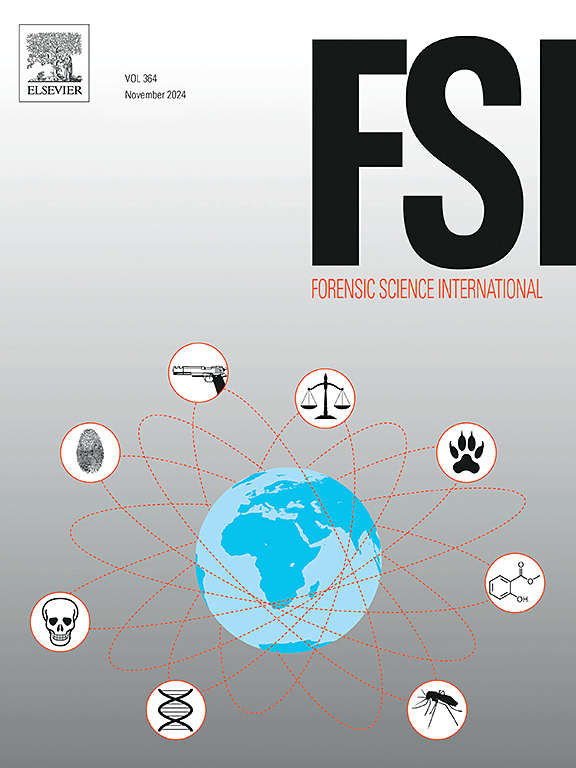Hide and seek with falsified medicines: Current challenges and physico-chemical and biological approaches for tracing the origin of trafficked products
IF 2.2
3区 医学
Q1 MEDICINE, LEGAL
引用次数: 0
Abstract
The criminal trafficking of falsified medical products is a worldwide, yet still largely overlooked, public health problem. A falsified medicine fraudulently misrepresents its identity, composition and/or source, often being ineffective or toxic for patients. Although techniques have been developed to detect falsified medicines, it remains a challenge to trace where- and by whom- the products are manufactured. We aim to discuss plausible biological and physico-chemical analytical techniques that could reveal information about the origin of medical falsifications. We first provide a brief overview on the prevalence, criminal activities, health impacts and (bio)chemical features of falsified medical products. We then explore diverse laboratory approaches, that are used in food fraud, illicit drug and wildlife trafficking investigations, and discuss how they could be combined and redirected towards tracing falsified medicine origin and hence empowering enforcement to counter this pernicious but neglected global health problem.
假药捉迷藏:目前的挑战以及追踪贩运产品来源的物理化学和生物方法
非法贩运伪造医疗产品是一个全球性的公共卫生问题,但在很大程度上仍被忽视。伪造药品欺诈性地歪曲其特性、成分和/或来源,通常对患者无效或有毒。尽管已经开发出检测假药的技术,但追踪这些产品是在哪里以及由谁生产的,仍然是一个挑战。我们的目的是讨论合理的生物和物理化学分析技术,可以揭示有关医疗造假的起源信息。我们首先简要概述了伪造医疗产品的流行、犯罪活动、健康影响和(生物)化学特征。然后,我们探讨了用于食品欺诈、非法药物和野生动物贩运调查的各种实验室方法,并讨论了如何将这些方法结合起来,重新定位于追踪假药来源,从而增强执法能力,以应对这一有害但被忽视的全球健康问题。
本文章由计算机程序翻译,如有差异,请以英文原文为准。
求助全文
约1分钟内获得全文
求助全文
来源期刊

Forensic science international
医学-医学:法
CiteScore
5.00
自引率
9.10%
发文量
285
审稿时长
49 days
期刊介绍:
Forensic Science International is the flagship journal in the prestigious Forensic Science International family, publishing the most innovative, cutting-edge, and influential contributions across the forensic sciences. Fields include: forensic pathology and histochemistry, chemistry, biochemistry and toxicology, biology, serology, odontology, psychiatry, anthropology, digital forensics, the physical sciences, firearms, and document examination, as well as investigations of value to public health in its broadest sense, and the important marginal area where science and medicine interact with the law.
The journal publishes:
Case Reports
Commentaries
Letters to the Editor
Original Research Papers (Regular Papers)
Rapid Communications
Review Articles
Technical Notes.
 求助内容:
求助内容: 应助结果提醒方式:
应助结果提醒方式:


